Comparing cat litter: what litter is best, for which needs and what are the differences?
We take a closer look at silica, baby powder scented and natural fibre options!
Cats, regardless of their breed, are individualists and have very different needs when it comes to cat litter. A cat that doesn’t like its litter usually shows it very clearly.
What happens if your cat doesn’t like the smell of its litter? Some fussy felines show it by doing their business elsewhere, avoiding the litter tray and going in other places instead.
What properties should a good cat litter have?
Because many cats enjoy meat-based food, they produce large amounts of ammonia and hydrogen sulfide that create the strong odour in cat urine.
Cats have sensitive noses and are reluctant to use heavily soiled, unpleasant smelling litter. It even makes them refuse to use the litter tray!
No moisture and no unpleasant smells. A good cat litter should, above all, be absorbent and soak up as much urine as possible so that no bad smells linger. But rough surfaces with sharp bits, a slippery texture or artificial smells can also disturb our soft-pawed friends so much that they avoid their litter tray and look for another corner at home to do their business
Save yourself the trouble and use a high quality litter that meets your cat’s natural needs.
Absorbency
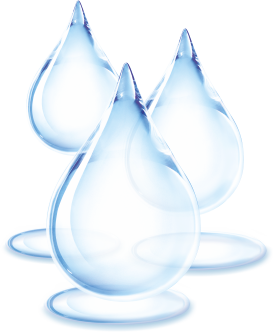
Cat litter absorbs moisture across their surface. Absorbency describes how much liquid can be soaked up in relation to the litter’s own weight.
How much liquid does a litter absorb? Is liquid soaked up quickly and what absorbency level do you need to avoid liquid seeping into the tray?
Clumping
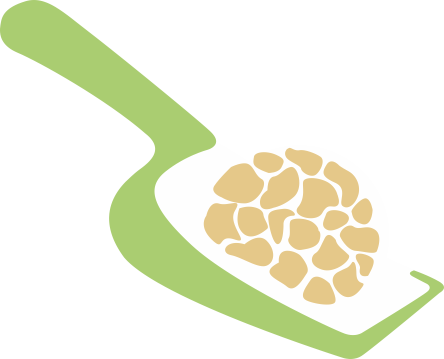
When urine is deposited on clumping litter, compact clumps form that you can easily remove. But not all “clumps” are the same! Sometimes even non-clumping cat litter is described as clumping.
There are big differences in terms of strength and limitations of clumping. How visible is the clump? Can it be removed in one piece? Does it disintegrate or stay intact?
Weight
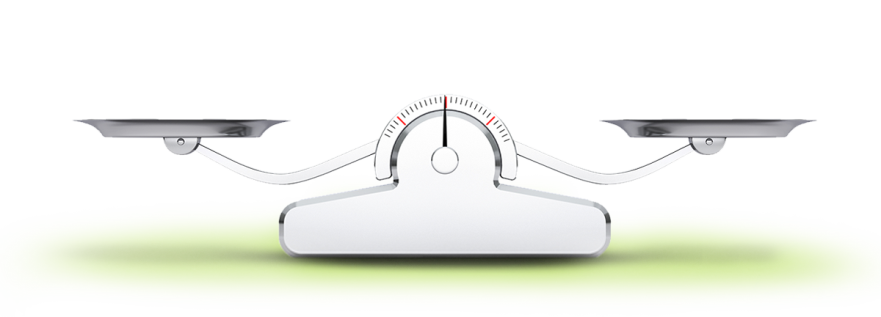
For an adult cat you need up to 250 kg of cat litter per year. This is not only the amount you have to buy, but also carry home and dispose of after use.
If you don’t live on the ground floor, it can be quite a sweaty job. How much does the litter weigh? How do I carry it?
Environmentally friendly

People are beginning to question silica and mineral litter due to sustainability concerns. More and more cat lovers are ecologically minded and boycott products that are energy intensive or not environmentally friendly.
Silica and mineral litter are not biodegradable and must be disposed of with other waste in landfill. Plant-based litter is 100% compostable and some (for example Cat’s Best *) can even be disposed of down the toilet.
*Clumps can be disposed of individually.
Please observe local disposal regulations.
Für SchweizFor Switzerland: Disposal via toilet is prohibited (GSchV 10).
Can cat litter be harmful to cats?

Scented, bleached or coloured varieties stand out from typical cat litters and are almost like lifestyle choices. Often, cat litters feature additives that are supposed to enhance their effectiveness.
Cats are extremely sensitive and can react as soon as chemicals are involved. Even a high-dust content often leads to allergic reactions in animals and humans.
Disposal
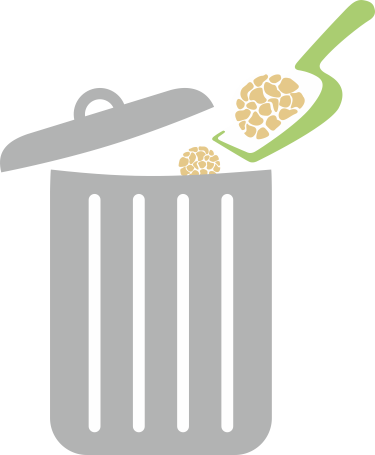
In Germany, cat litter accounts for around 425,000 tonnes of waste per year, of which mineral litter alone represents almost 400,000 tonnes! It’s one of the largest single waste items in German homes. Disposing of it in household waste incurs increased waste disposal fees, in addition to negative aspects such as unpleasant odours and repeated emptying.
How do you dispose of litter? In household waste, organic waste bins or compost?
Odour retention
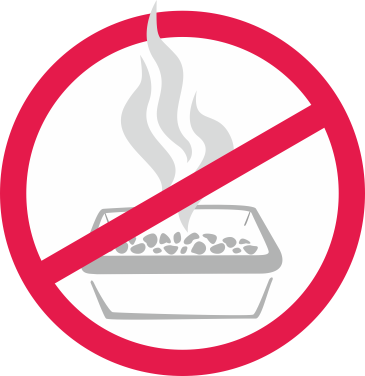
You’ll immediately notice the smell of recent cat urine, as well as the annoying stink that comes from the litter tray if it’s used frequently.
Are smells immediately absorbed?
Wie stark ist die Geruchsbelästigung How much do odours linger after 3 or 5 days?
Price
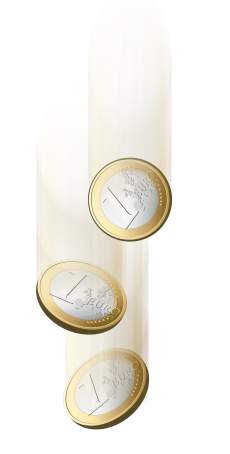
In general, clumping litter is more efficient, as the soiled litter is clearly visible and can be easily removed. As only the contaminated lumps have to be removed, the basic litter level lasts much longer.
How much do I need to spend to fill the litter tray?
How often should I completely empty the tray? Does mould grow or odours develop?
What types of cat litter are available?
Cat litter products vary as much as the preferences of cats and their owners!
Cat litters can be categorised by a number criteria: first, by the raw materials used (for example, mineral litter as opposed to vegetable litter), second, by functionality (such as clumping or non-clumping), third, by texture (for example, coarse, fine-grained or pellets) and last, by litter additives such as fragrance, colour or substances intended to make it more effective.
The best known is mineral cat litter based on bentonite, lime quartz sand or silica. Cat litter based on plant-based raw materials includes Cat’s Best products.
What are the real differences between cat litter?
How do they vary?

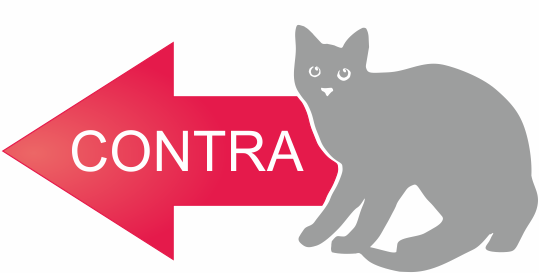
– Let’s take a closer look at the types of litter!
What does a “good” litter have to be able to do for you?
And what speaks for or against it?
Silica cat litter
Silica litter is silica gel in the form of granules or beads. It is light and absorbent, usually available in a non-clumping form.
Silica litter must be completely changed after a short space of time and can be disposed of in organic waste bins. Silica and silica gel are cheaply produced in China, but with a significant environmental impact. The granules rustle loudly, which can put some cats off.
- Non-clumping product
- Colour: brilliant white (other colours possible)
- Absorption rate: approx. 100 – 180 %.
- Odour control: average
- Granulometry: varies from beads to crystals

- Lightweight
- Light colour, attractive appearance
- Less heavy than mineral cat litter

- Weak to medium odour control
- Contains dust depending on quality
- Non-biodegradable
- Can’t be disposed of in the toilet
- Non-clumping
- Dangerous if swallowed by kittens
- Energy intensive production
Mineral cat litter
Mineral litter is extracted through opencast mining. There are both clumping and non-clumping varieties. Additional substances are often used to improve liquid and odour control. The litter is heavy and must be disposed of in household waste. Huge pits are left behind in mining areas after deposits are depleted. It damages natural habitats for many years that can only be restored through extensive replanting.
- Standard clumping product
- Colour: grey to beige
- Absorption rate: 150 % – 300 % (depending on quality)
- Odour control: weak to average
- Granulometry: varies from fine to coarse
- Mined in open pits
- Non-biodegradable; cannot be disposed of in the toilet

- low to medium priced product
- good clumping performance – forms solid clumps

- poor odour retention, often perfumed
- hard material – not paw friendly
- non-biodegradable
- cannot be disposed of in the toilet
- thick layers required (650 g to > 1000 g/ L)
Natural fibre plant-based cat litter
Cat litter based on plant-based raw materials such as wood, corn, cellulose, hemp and other renewable, vegetal materials is increasingly finding a place in cat owners’ homes. The litter is available in clumping and non-clumping varieties and is usually lighter and more economical to use. Yield and handling are strongly dependent on quality. Vegetal litter completely biodegrades through natural rotting processes and is compostable.
- Effective and natural liquid and odour control
- Clumping product
- Colour: same as the raw material used (light brown, yellow, white)
- Absorption rate: varies according to the product. For Cat’s Best up to 800%
- Granulometry: coarse to fine-grained

- Natural odour control – neutralises bad smells
- 2 times higher absorption rate than mineral cat litter
- Lightweight
- can be disposed of in the toilet*
- Low dust content
- Very soft underfoot
*Clumps can be disposed of individually.
Please observe local disposal regulations
For Switzerland: Disposal via toilet is prohibited (GSchV 10).

- Higher price (premium cat litter), but more efficient (> 7 weeks)
- Scatter effect due to lightweight nature
Corn cat litter
Litter made from corn clumps but does not eliminate unpleasant odours as consistently as wood-based plant fibre litter. As liquid can seep down to the bottom of the litter box, it needs to be completely changed sooner. Corn litter has its own particular smell that becomes more intense after use. Some cats like it, but others don’t. Corn litter is low in dust, but can quickly be scattered throughout the entire living room because it is quite light. Some animals find corn so tempting that they prefer to eat it rather than do their business in it…
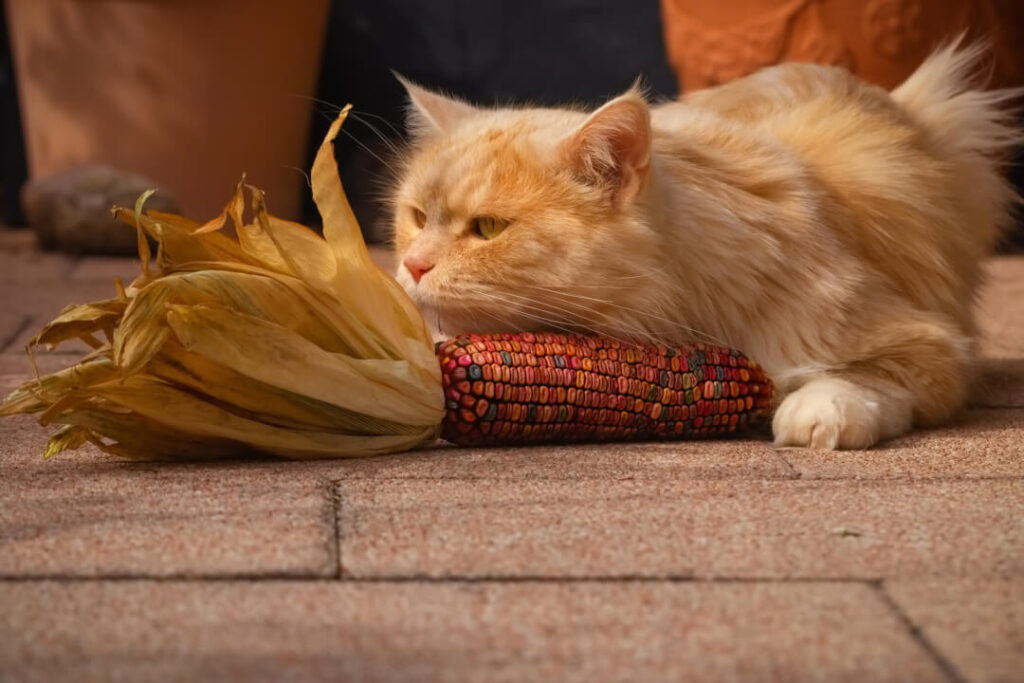
Cat litter alternatives
Alternatively, you can also try litters adapted for small animals. Ensure that they are high quality fine granulate or pellets made of soft wood that absorb and eliminate odours.
Chips are not that great! They absorb moisture well, but you will soon feel like you’re on a South Sea island. The scatter effect is inevitable as the chips are as light as a feather!
You have to be careful about sand and earth depending on their origin, as they can contain foreign substances that are harmful for your furry friend and make him or her ill.
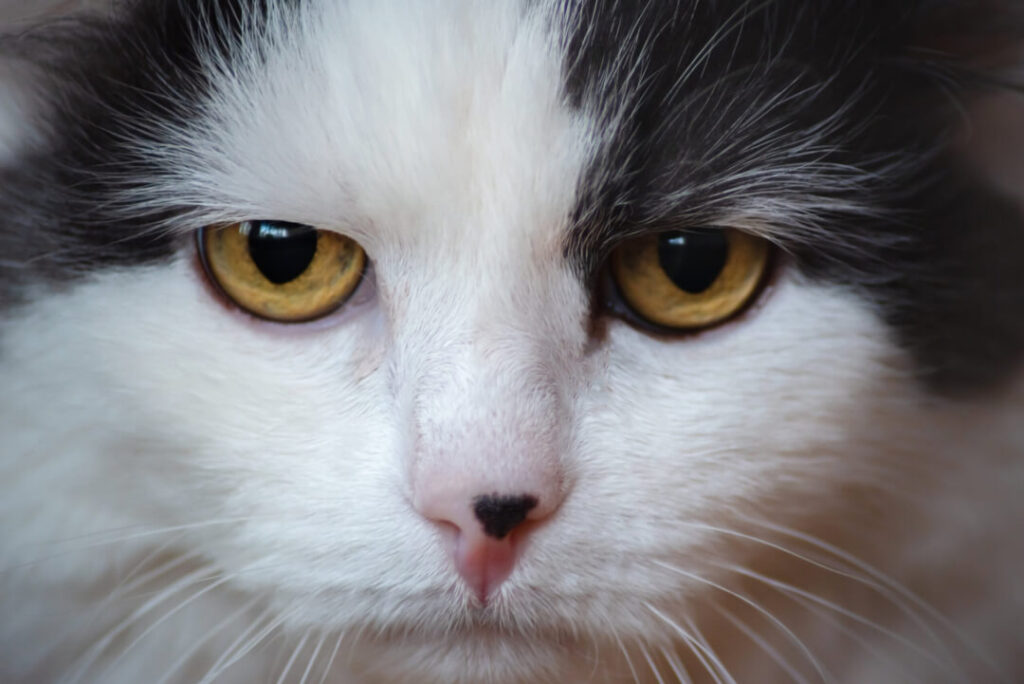
You might want to avoid touching it by using bits of cloth or paper: the chemicals or additives* will harm your cat.
There’s the danger that they get tangled up in long pieces of fabric.
Scented cat litter
Typical porous mineral granules cannot effectively neutralise odours as moisture is only absorbed and dries into the surface gradually. As a result, many litters use odour blockers to cover smells with aromas and perfumed substances. Litters with a strong odour – e.g. baby powder scent, vanilla, rose, lavender – aim to mask litter tray smells. However, they cannot effectively eliminate odours.
Baby powder scented cat litter
We all know that the smell of newborn babies evokes strong emotions in women. But what is it about baby powder that appeals to men too? Perhaps it’s the vanilla content, which is said to have aphrodisiac properties!
Marketing experts have definitely hit the jackpot!
So if you want, you can float through life on a cloud of baby-inspired scent….
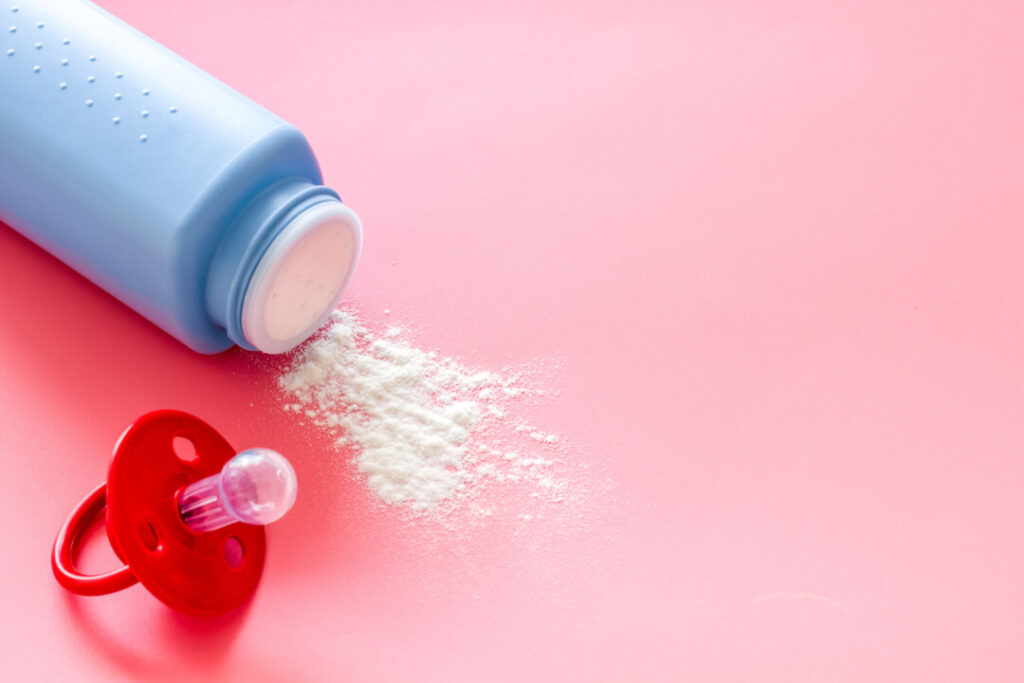
Lavender and other “natural” smells
People who want to protect their gardens from uninvited feline adventurers are advised to cultivate certain plants to put off invaders. A tried and tested defence is lavender (Lavandula angustifolia).
Curious cat lovers might ask themselves what’s the purpose of lavender in cat litter? To drive their cuddly companion out of the house?
What puts many furry felines to flight, can be attractive to others!
And it’s the same with many other natural fragrances.
Katzen kann – und soCats cannot – and should not – be lumped together!
Each is a unique individual.
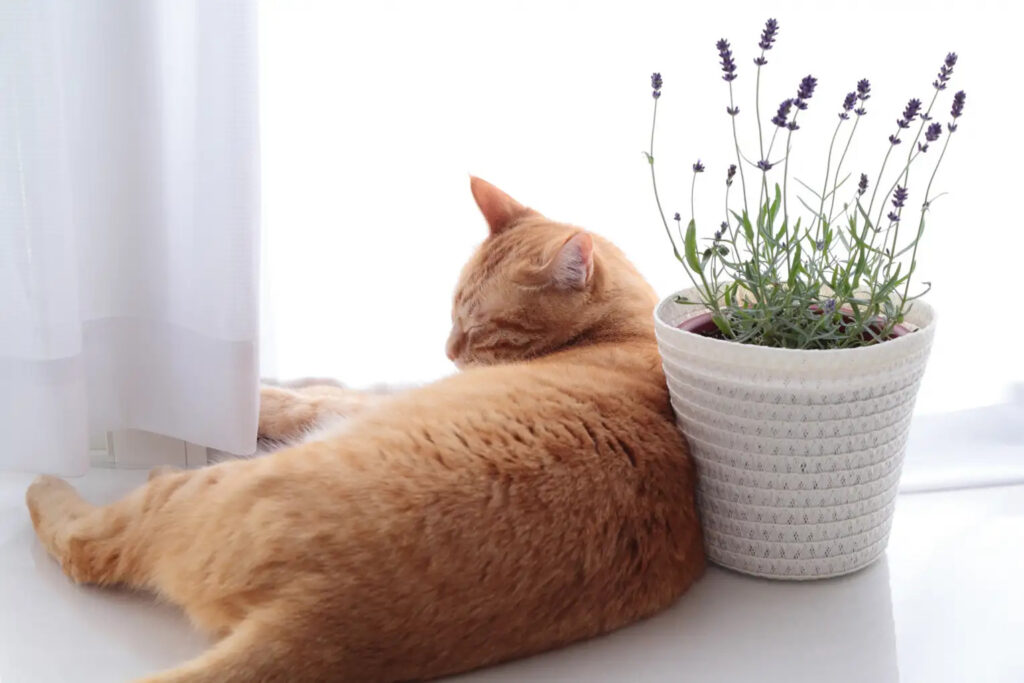
Read about which plants cats like and don’t like here.
Attention: Not every cats likes scented cat litter
You love the fresh smell of the house after a good clean?
Your cat will find the scent of cleaning products, onions, vinegar, lemons and plants such as cranesbill, harp shrubs or herbal varieties repellent. Your cat’s nose is much more sensitive than yours and has completely different preferences. Many of our furry friends don’t like litter with an intense smell. Caution is advised, especially with artificial scents. Best to avoid them, even if you find them very tempting!
Cat’s Best cat litter
Animal experts agree that animal hygiene products made of vegetal raw materials and free of chemical additives help guarantee a long and healthy pet life, because they are closest to animals’ natural living conditions.
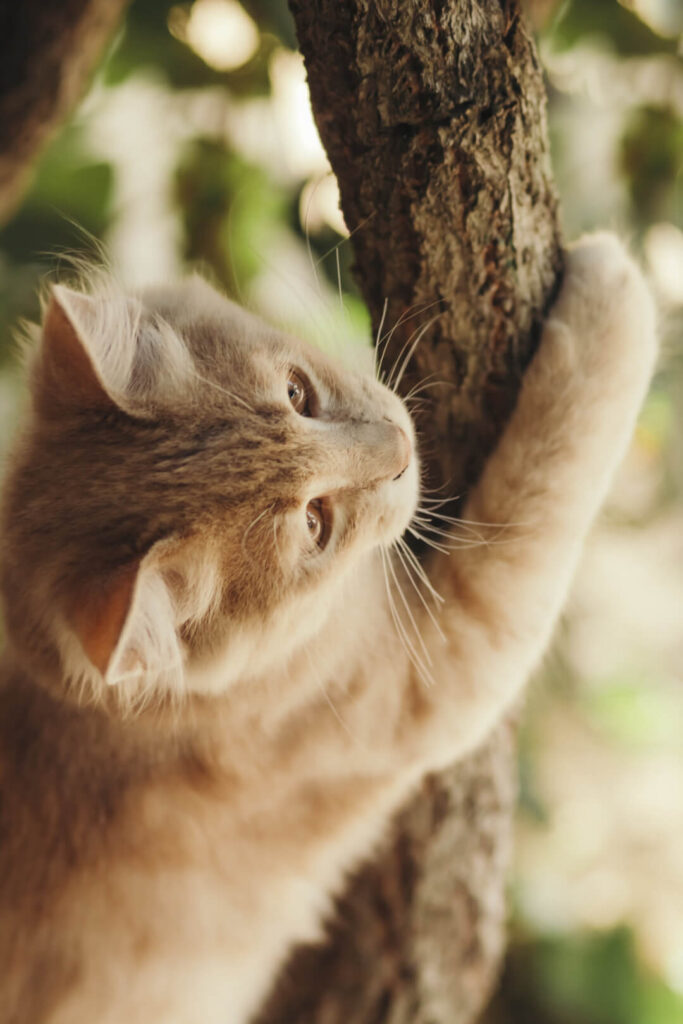
Advantages of Cat’s Best
Nature is ingenious: Cat’s Best has been developed using sophisticated technology based on plant-based raw materials. It’s a sustainable animal hygiene product with unique functionality – revolutionising cat hygiene with its absorbency, odour retention and cost-effectiveness:
- naturally effective liquid and odour retention
- extremely lightweight to carry
- biodegradable
- naturally pleasant wood fragrance, with no perfumes
- sustainable raw material extraction – PEFC certified
- compared to mineral litter (extracted in open-cast mines), vegetal cat litter doesn’t damage landscapes nor generate waste which has to be disposed of in landfill, in contrast to mineral litters
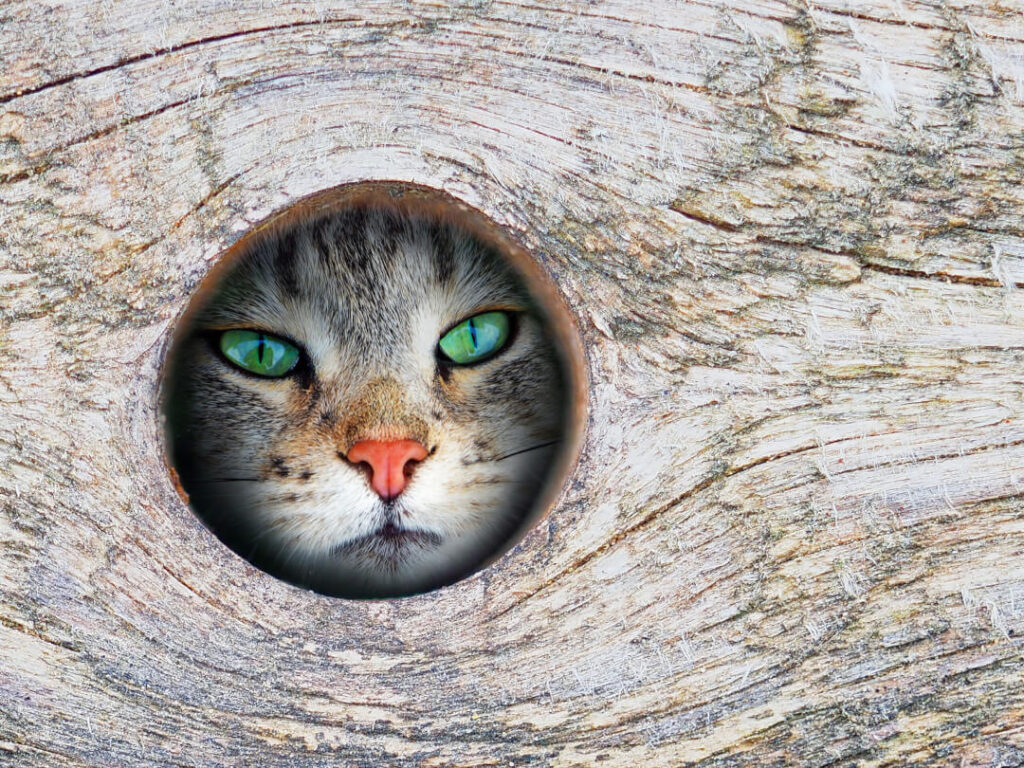
Our secret: refined active wood fibres
Cat’s Best fights odours actively and proactively!
Odours are created when there is sufficient moisture. So the best way to fight them is by removing any moisture.
Plants powerfully absorb every drop of moisture with each single fiber!
With technologically refined active wood fibers, Cat’s Best ensures that smells don’t stand a chance. They absorb moisture and lock it in permanently in no time. No moisture – no bad smell!
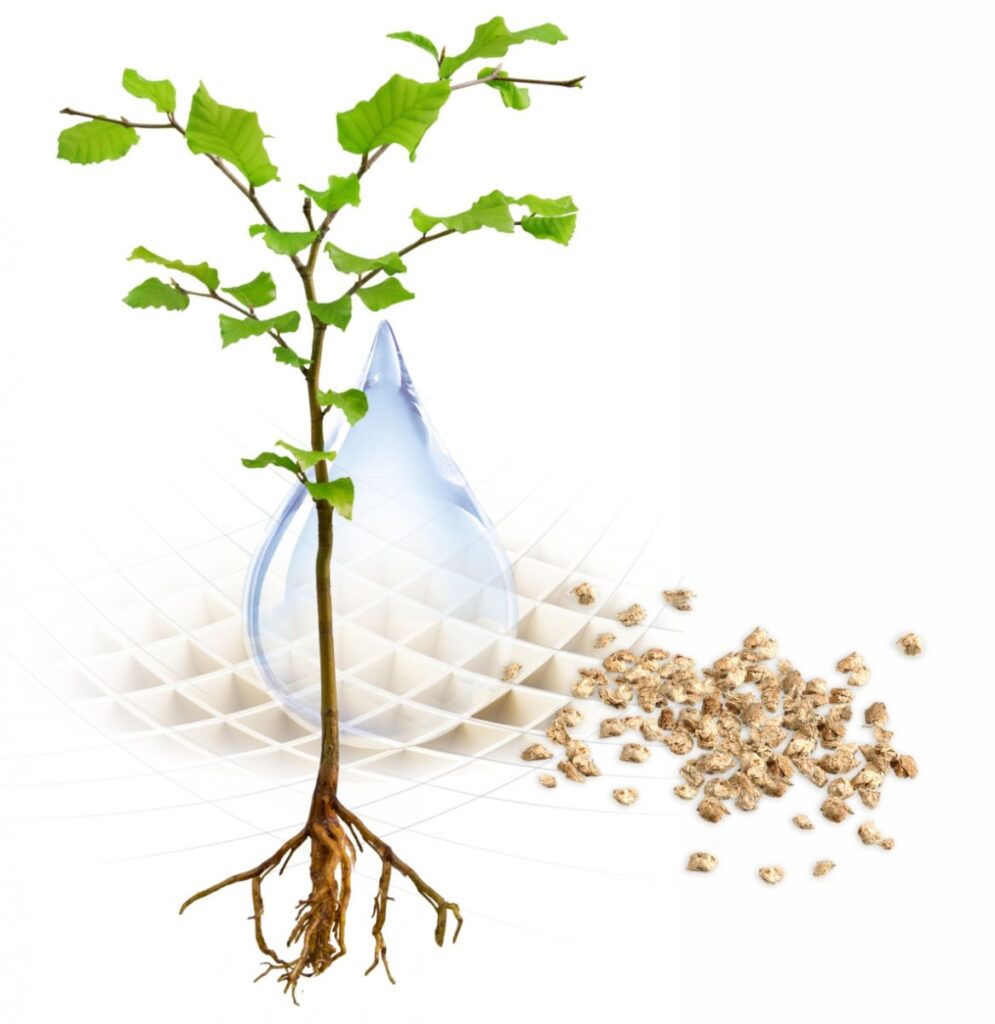
Odours are permanently bound in and the litter can remain in the litter box for up to 7 weeks before a complete change is due.
The compact clumps of Cat’s Best can be removed very economically and easily so there are no contaminated particles left in the litter tray. A basic Cat’s Best litter will last much longer than conventional litter. Heavy lifting is over: this vegetal fibre litter is extremely lightweight.
The bottom line is: less work and lower cost, giving you more time for the good things in life!
Our different varieties
Cat’s Best is specially tailored to the needs of cats in three different varieties.
The fact that Cat’s Best is made from natural and renewable materials is good for our furry friends, because Cat’s Best feels soft and woody underfoot – just like in nature. Cats love the fresh, natural smell of this litter.
And you can also breathe easily again!
All varieties in the Cat’s Best range have the dust removed using a special process during manufacturing. With Cat’s Best you no longer have the feeling that you have to fill your litter tray with a perfumed hanky to hand!
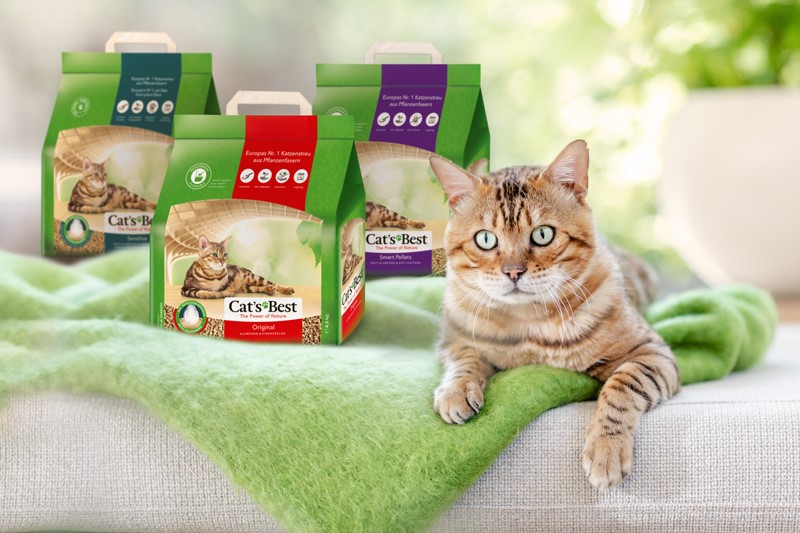
Cat’s Best efficiently and naturally binds in odours and creates a clean environment that makes everyone feel good
Comfort for you and your cat!

